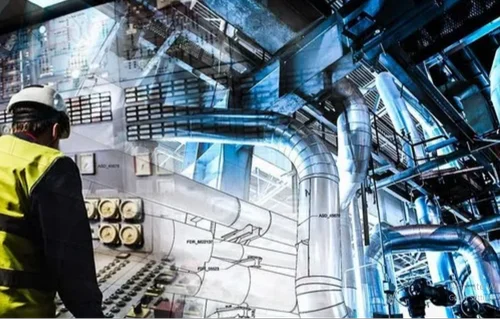Understanding the DCS System Layout: A Modern Approach to Process Control
Distributed Control Systems (DCS) have revolutionized industrial automation by decentralizing control and integrating complex processes. These systems create a unified network where operators and engineers collaborate effectively. Let’s delve into the structure of DCS and understand its critical components that make it indispensable for large-scale industries.
Key Components of a DCS System
A DCS system consists of several interconnected components. These include:
- Field Devices: These sensors and actuators gather real-time data from the plant. For instance, temperature sensors monitor heat levels in chemical reactors, ensuring process stability.
- Controllers: These devices process data from field instruments and execute control actions. They act as the system’s brain, making decisions based on programmed logic.
- Human-Machine Interface (HMI): This interface provides operators with a visual representation of the process. Engineers use it to monitor and control plant operations efficiently.
- Engineering Workstations: These workstations enable configuration, programming, and diagnostics. Engineers use them to modify control strategies or troubleshoot issues.
- Communication Network: This backbone connects all components, facilitating data exchange and synchronization. High-speed and secure networks ensure reliable communication across the system.
Why DCS Thrives in Large Continuous Processes
DCS systems excel in industries with large-scale, continuous processes. For example, refineries and petrochemical plants rely on DCS for their complex operations. These systems handle massive amounts of data and ensure real-time control, which is critical for maintaining product quality and operational safety. Moreover, DCS ensures high reliability, minimizing downtime and preventing financial losses.
Enhancing Reliability and Security
DCS systems prioritize reliability and security. Redundant architectures, for instance, ensure uninterrupted operations. If one controller fails, another takes over instantly, avoiding process disruptions. Furthermore, robust security features prevent unauthorized access, safeguarding sensitive industrial data. This combination of reliability and security makes DCS indispensable in critical applications like power generation and oil refining.
Simplifying Process Control
Operators benefit from DCS because it simplifies complex processes. The HMI presents real-time data in an intuitive format, allowing quick decision-making. Engineers can also customize control logic to adapt to specific process needs. For example, in a food processing plant, DCS can adjust cooking times and temperatures based on product requirements, ensuring consistency and quality.
Conclusion
The Distributed Control System stands as a cornerstone of modern industrial automation. By decentralizing control, enhancing reliability, and simplifying operations, it addresses the unique challenges of large-scale industries. Its flexibility and adaptability ensure it remains relevant as industries grow and innovate. For any plant striving for efficiency, security, and scalability, DCS is not just an option; it’s a necessity.


